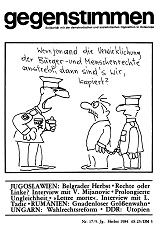
We kindly inform you that, as long as the subject affiliation of our 300.000+ articles is in progress, you might get unsufficient or no results on your third level or second level search. In this case, please broaden your search criteria.

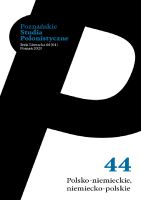
This article attempts to present the television series as a distinctive text which can persuasively and therefore effectively appeal to contemporary viewers, providing them with an insight into the events of a predefined period of Polish and German history, arousing certain emotions and thoughts or, in a general sense, even making them reflect on the history of both nations. With its attractive storyline based on, among other things, the dramaturgy of the presented events, this type of series can be perceived, to some extent, to be part of contemporary historical narration
More...
Tranziția la era digitală în secolul XXI este un fapt inevitabil și ireversibil, iar ceea ce privește transferul în zona virtuală aceasta nu mai este o noutate. Cu toate acestea, odată cu situația pandemică provocată de noul Corona virus COVID 19 în rețeaua artistică festivalieră în sfera artelor vizuale, film și muzică s-a accelerat sau chiar a forțat schimbarea formatului de produs cultural, la nivel de prezentare și experiență.
More...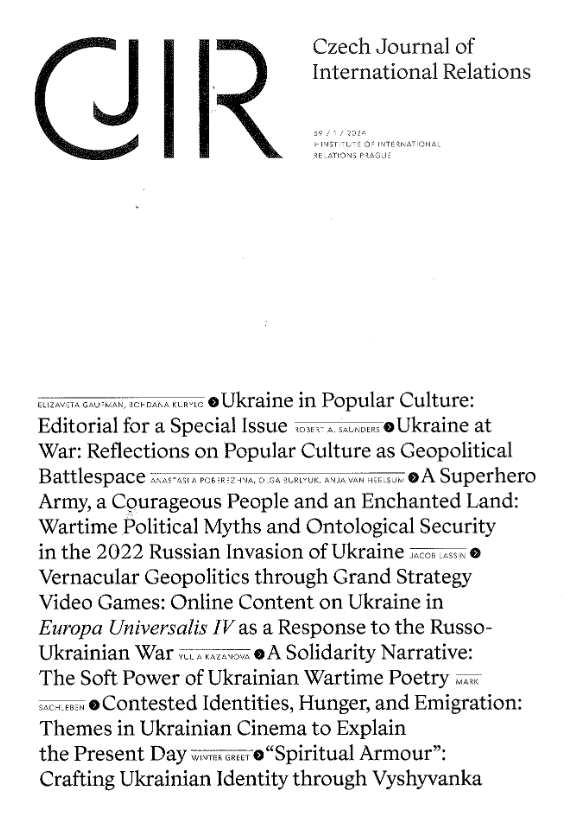
Storytelling is an essential aspect of the creation of a community of the mind. Shortly after its invention, film became instrumental in cultivating national identity. States and national groups are keen to have their stories told in order to reinforce a sense of identity internally and claim relevance externally. This paper explores how film and popular culture help to explain politics and identity in Ukraine, examining how films are reinterpreted, reformulate a canon, and facilitate new political arguments. Therefore, through the films of Alexander Dovzhenko, we can see how the struggle to balance political ideology and national identity depicted in them helps to illuminate and explain politics today. A feature of Ukrainian cinema that is often overlooked is how films made by the diaspora perpetuated national identity, language, and culture through periods of hunger and subjugation. These films are both a statement of political and cultural identification and the basis for current political claims.
More...
The originality of Emil Loteanu’s talent in the cinematographic sphere is strengthened by the consonance of the conception of Nature in the ideal and confessional hypostases propelled by the grand romantics, with Romanian patterns of nature-centric parentage. The article discusses the phenomenon of crystallization of the personal Myth of the Carpathians reintegrated as a philosophical-aesthetic and genuine-stylistic binder, which interpenetrates all the poetic and cinematic creation of the artist. This myth of the filmmaker’s myths simultaneously contains the cardiography of the turbulent history of the nation, but also of the personal life of the filmmaker-orphaned by his father and by both homelands of his childhood, who took refuge in the catharsis of the splendors of the Carpathians, bringing back in his inspired films the estranged Bucovina into a spiritual, aesthetic, civic whole. In the paper, Emil Loteanu’s creation is related to the sacred monsters of the world film, especially O. Welles, F. Fellini, I. Bergman, A. Tarkovski, who also through their personal myths revealed their unconscious personality to mankind, but also the hierarchies of spiritual values of world images.
More...
The article highlights the paradigm of the road, starting with biblical stories, myths and folk stories up to the image of the road presented in the youngest art - cinematography - where it is involved both functionally and symbolically-metaphorically. The road becomes a fundamental element, especially in the road movie genre, which obviously broadens its boundaries, discussing the most current issues. The emphasis will be on the meanings of the road in a special genre, the films-tales, and in particular, those inspired by Ion Creangă’s works. Arming ourselves with the theories of Vladimir Propp and those of Joseph Campbell, we will go through the interpretations of Crengian fairy tales in the films: De-ași fi…Harap Alb/If I were Harap Alb (1965), Povestea dragostei/Love story (1976), Maria Mirabela (1981) - all directed Ion Popescu Gopo, Se caută un paznic/ Looking for a guard (1965) by Gheorghe Vodă and Dănilă Prepeleac (1996) by Tudor Tătaru. The road in the mentioned films is one of the basic elements: from the road of knowledge of the world and the internal road to oneself, to becoming a personality, as well as other meanings that we will detect in the analysis process.
More...
The paper explores the problems of manipulation and reliability of information in the visual media. Manipulation is part of their essence. Distortions in the message arise from a shift in attention from reality as such to how it’s seen by others or who and how it’s represented. The objective vision is replaced by a presentation of the vision of others in visual media. This opens up the possibility of manipulation and becomes the reason for the creation of visual falsifications. Modernity has become the era of post-truth. Visual media are increasingly shifting towards total falsification with the development of digital technologies, artificial intelligence. The generated image turns out to be more real and reliable than reality itself. This paper uses the classification of visual media images based on how they are created. An attempt is made to identify the causes of distortions in the representation of reality at different stages of the development of visual media. The article analyzes how the technologies of creating visual images affect the development of manipulative and falsifying practices that undermine the credibility of the visual message.
More...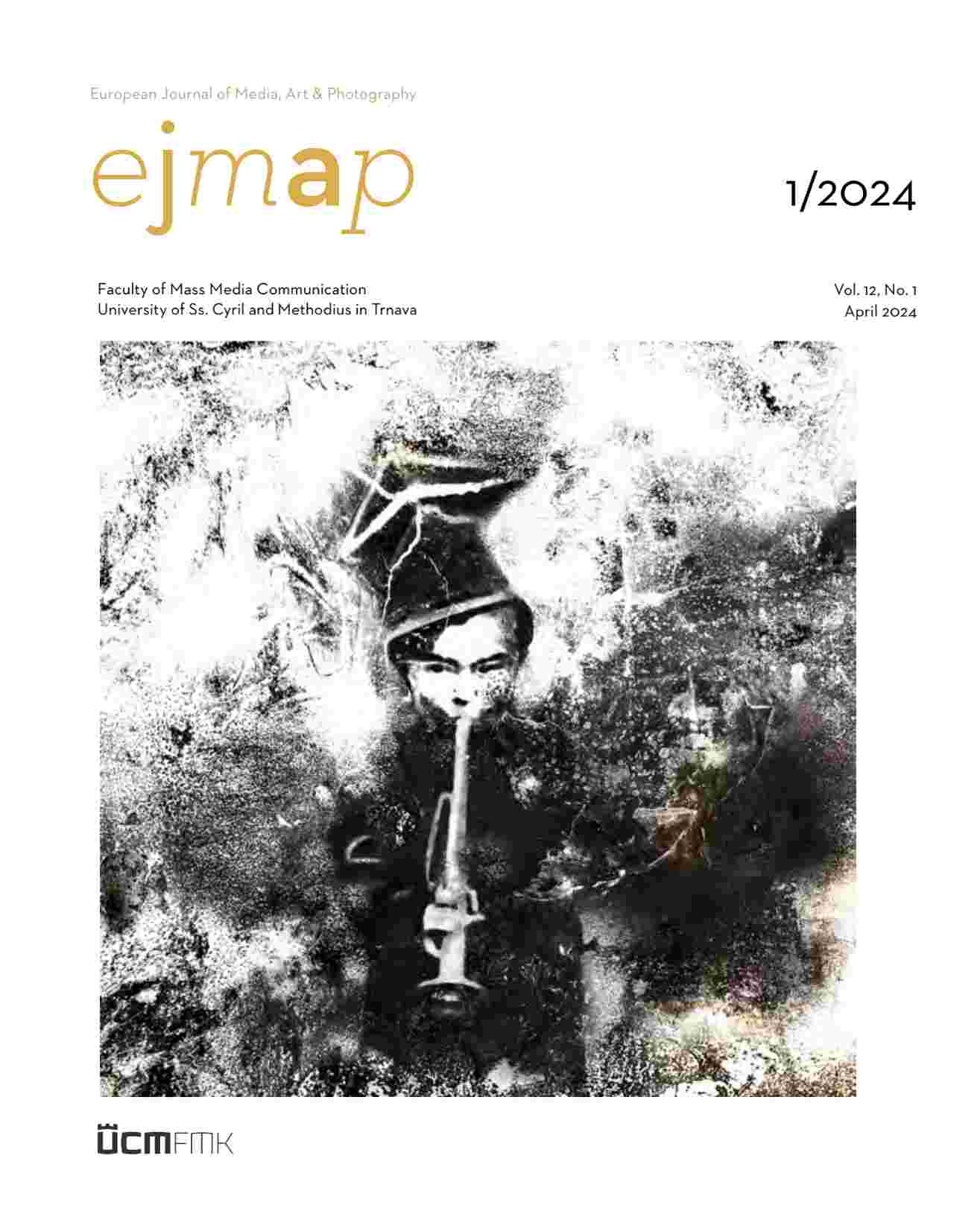
In his work, the author primarily focuses on the urban landscape and its impacts on human life. His entire documentary work is linked by a unified authorial idea. In the “Jungle City” cycle, he works with the visual counterpart of the current form of the Bratislava metropolis, full of transportation routes, dense modern development, and concrete surfaces. The means to create unexpected views of the city for him are carefully selected locations on the urban peripheries surrounded by dense vegetation – trees and wild grasses. He thus achieves a completely new view of Bratislava, in which it returns to the wilderness. The project “Quiet Sunday Afternoons in the Town by the Refinery” is the author’s reflection on the impacts of industry in the rural surroundings. The focal point is the technical structure of an oil factory, which covers a significant part of an otherwise tranquil landscape of a small Austrian town. However, through austere visual expression, Korček delivers an urgent message about the adverse impact of the factory on the ecosystem. As part of the series “Here Is Our Paradise”, which unifies the theme of lawns and trees, Korček addresses the disruption of the stereotype of urban housing estates through the small self-help interventions of their residents. While walking with a camera, he supplements these plants with various found mixtures of folk interventions placed in front of panel buildings. In the “Searching” series, he adopts the position of an observer of urban movement, consisting of figures of pedestrians in narrow rays of the low-lying sun. This time he works in the environment of New York, but unlike the previous series, he does not specify this location, only utilizing its elemental potential. Korček does not work with photographic effects; he fully utilizes the poetics of the chosen locations. He skillfully works with perspective, multiple plans, or the selection of a location. Through their specific combination, he succeeds in creating authentic images of the location, in which we still find a lot of personal fantasy.
More...
The presented study deals with the issue of the discourse of pictorial portrayals in present-day audiovisual culture. The authors aim to find the basic parameters of the current discourse and discursive practices within audiovisual creation, especially film and television. They define basic concepts and categories and submit them to analysis. From this aspect, they examine aesthetic categories, especially aesthetic values and functions in relation to the interpretation of image representations. They formulate the premise that the expressions of visual presentations are reflections of the digital technical-technological platform of audiovisual making, the ethos of postmodernity and postmodernism, and the ideal of consumption of experiences as one of the most important values of present-day Western civilization. In a logical sequence, they deal with the matter of the ethos and value-related frameworks of postmodernism as relevant factors that condition the discursive practices of audiovisual creators. On the other hand, they name the mindsets of individuals, recipients of audiovisual statements, testifying to their specific desires for emotional encounters. They reach the conclusion that the discourse of the expression of visual representations in contemporary audiovisual culture has clearly defined parameters of creative approaches and reception expectations.
More...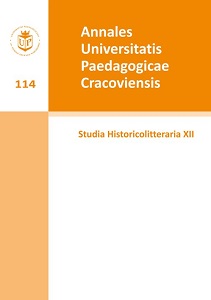
The author traces the influences of the Battle of Grunwald, 1410 (understood as a cultural artifact) in various works of art. The religious hymn Bogurodzica (Mother of God), known already before the Battle, after 1410 gained the status of national anthem, promoted by the chronicler’s account of the event. The Battle of Grunwald features in Polish literature, painting, music, film and even in the latest tools for communication and education (board games, the Internet). The article serves as an introductory sketch to the complex issue of the significance of the mythologised Polish victory in the development of Polish artistic culture.
More...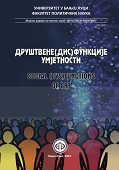
This paper deals with the analysis of aesthetic and social factors that were crucial in the communication process between the Classical Hollywood Western and the audience. The focus of the paper is on the Western films made between 1940 and 1970, when the genre of Classical Western was extremely popular worldwide. The reasons for this are manifold, since they encompass the aesthetic, sociological and psychological sphere. Firstly, as a relatively new art, film was beloved by spectators, and the aesthetic structure of the Western (themes, manners of interpretation, directing, acting and other) suggestively attracted the attention of millions. The paper also identifies ideological (sociological) components of communication. Particular emphasis is placed on the change in the relationship of film auteurs towards Indians, who were at first represented as savages only for that image to become much more objective and closer to the truth. Explication and exemplification of the hypotheses are conducted using the examples of typical and characteristic films that belong to the category of Classical Westerns. Furthermore, the paper contains a comparative analysis of the most prominent authors of this popular genre, including John Ford, Howard Hawks and Budd Boetticher
More...
After the Greek civil war between the forces of the Communist Party and those of the right-wing civil political system (1946-1949), commercial cinema met an explosive development. The paper connects its growth with the attempt on behalf of the post-civil war right-wing Greek state to establish its cultural hegemony through popular movies, which promoted ideas such as hard work, family values, an individualistic perspective on prosperity (as opposed to the social struggles of the left), and, above all, obedience to the legal order (since, after its defeat, Communist Party was literally illegal). All these ideas were expressed through the emergence of the model-character of a poor but honest citizen: usually coming from the working class, his main features were his political indifference and his desire for undisturbed social peace, while the plot was built around his pursuit of personal happiness, achieved through hard work or, in the case of women, through a successful marriage. During the post-civil war era, all the way through the 1967 dictatorship, cinemas (especially in working-class neighborhoods) will function not only as meeting points for entertainment, but also as cultural melting-pots, where the political passions of the past would be left in oblivion, where the controversies of the present would be blunted, and where a very cheap ticket could create a convincing promise of a prosperous future.
More...![Passe douloureux et présent apaisé ? Des récits de vie de femmes allemandes et polonaises en Silésie dans le documentaire Aber das Leben geht weiter [Mais la vie continue]](/api/image/getissuecoverimage?id=picture_2023_82626.png)
Two elderly German women return with their daughter and niece to their former family home in Silesia (Poland), only to find the current Polish home owner along with her descendants. This is how the German film director Karin Kasper documents her own family history together with that of the Polish family installed in their farmhouse after the Second World War, in her movie Aber das Leben geht weiter [But Life Goes On], produced in 2010. I aim to analyze the representation of this exclusively feminine intergenerational and international encounter. Fueled mainly by the narratives of elderly people, but also by photographs and videos taken from the respective family archives, and, of course, by several recordings of the participants themselves as well as the house and the village where these reunions take place, this documentary’s objective is to preserve and share the memories of the older generation. Such memories stir up very painful facets of the history of the 20th century in Eastern Europe: Second World War, persecutions and forced displacements of Polish ethnics by Germans and Soviets, flight and expulsion of the Germans, etc. Which light do these exclusively feminine micro-histories shed on the historical facts? How are the traumatic experiences expressed even decades afterwards? Could it really be a question of resilience? What emotions arise from what is said, but also from silences and postures? What heritage of memory and post-memory has been transmitted to the next generations? More broadly, can this “film testimony” contribute to the German-Polish reconciliation? Such are the main questions to which I wish to respond.
More...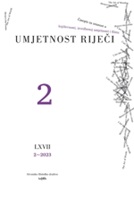
This article analyses Alasdair Gray’s storyboard for a never made film adaptation of the novel Lanark: A Life in Four Books (1981) as a self-standing intermedial artwork. It presents an argument that the specificities of the nested graphic narrative medium, or “graphicality”, can be used not only for the reading of the storyboard’s text/image/space convergence, but for a better understanding of the textual and visual elements of the source novel as well. Gray’s autoreferential process, recognized in previous analyses of his literary work, is thus approached through the optics of his foregrounded media materiality. What takes centre position is the process of realising the story, and of the new artistic object made in the process. Such an object questions the reading and viewing regimes reproduced and displaced by every artwork. The analysis of the Lanark storyboard, which is an artwork “between” literature, graphic arts, and film, is a contribution to a rising body of scholarly work that uses a comprehensive theoretical approach to gain a better understanding of such syncretic artworks.
More...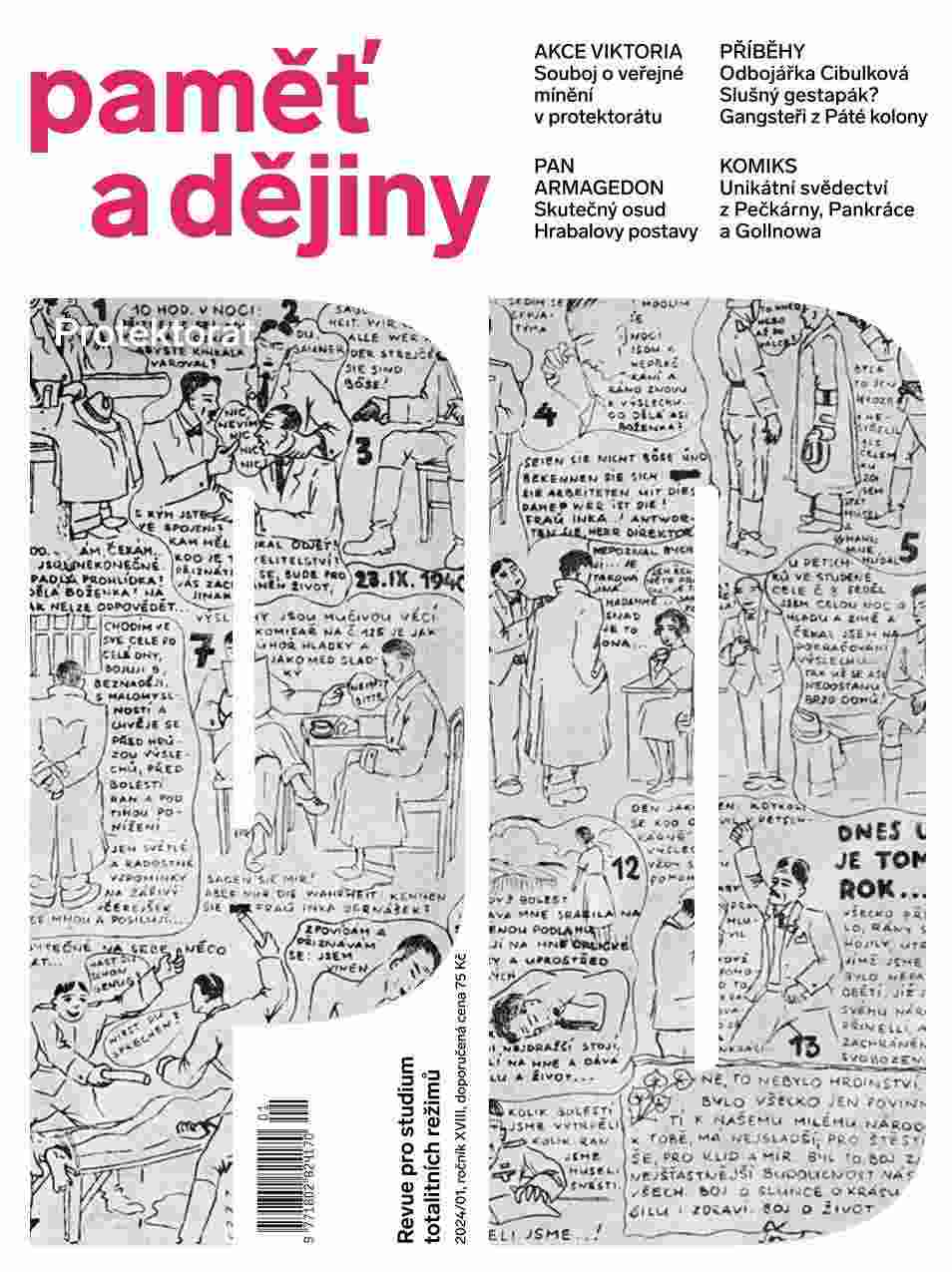
The article discusses the Film Harvest festivals held in Zlín during the Protectorate era in 1940 and 1941. These festivals, inspired by international film festivals like Venice, aimed to celebrate and promote Czech cinema. The first festival, organized by the Film Central Office for Bohemia and Moravia, featured a mix of feature and short films and included a rich accompanying program. The second festival saw increased German oversight and included prominent Nazi officials. Despite this, the festivals were significant cultural events, showcasing new Czech films and fostering a sense of national pride. The festivals also served as a platform for informal discussions about the future of Czech cinema post-war. The article highlights the festivals' dual role as both cultural celebrations and subtle acts of national resistance.
More...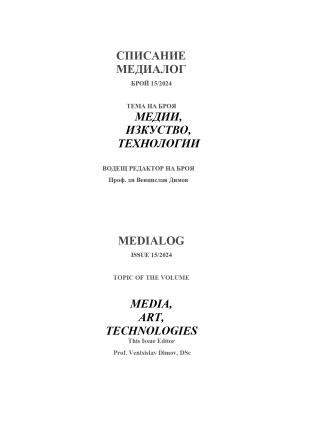
After observing the 20 photographs of the exhibition of Angel Kotzev the viewer is (I am) left with the feeling of unreality (the author presents this effect as aloofness): and no, this is not connected just with the abstract space, unusual tonality or the combination of objects. This is mainly because of the aesthetic taste – the aesthetics of ordinary objects, which are presented as a fantastic conventionality.
More...
The Constitution [Ustav Republike Hrvatske], a Croatian film written and directed by Rajko Grli? (2016), dramatizes how living together in a society challenged by interethnic hatred and homophobia requires interconnectedness and understanding. 1 Seemingly intractable differences are unexpectedly reconciled at the end of the film through the cultural custom of ritual kinship known as kum or godfatherhood. The film’s inspired but natural solution to interethnic conflict and intolerance introduces the subject of this short essay, namely, the unique role and unrecognized importance of interfaith ritual kinship for preserving solidarity and social order in a polyethnic society. Despite the deep wounding of this South Slav heritage, the cultural custom is faintly but tellingly sustained.
More...
Ustav Republike Hrvatske, hrvatski film koji je napisao i režirao Rajko Grlić (2016), prikazuje kako zajednički život u društvu koje se suočava sa međunacionalnom mržnjom i homofobijom zahtijeva međusobnu povezanost i razumijevanje. 1 Naizgled nepremostive razlike neočekivano se prevazilaze na kraju filma kroz kulturni običaj obrednog srodstva poznatijeg kao kumstvo. Filmom nadahnuto, ali prirodno rješenje međuetničkih sukoba i netolerancije daje uvod temi ovog kratkog eseja, odnosno jedinstvenoj ulozi i neprepoznatoj važnost međuvjerskog obrednog srodstva za očuvanje solidarnosti i društvenog poretka u polietničkom društvu. Uprkos narušavanju ovog južnoslavenskog naslija, kulturni običaji se rijetko, ali i dalje uspješno održavaju.
More...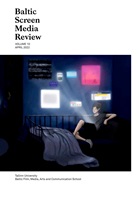
One key aspect of cinematographic lighting – and lighting in general – is its direction and how the lighting illuminates people and other objects of attention. In a natural setting, the light reaching the target usually has at least some level of directionality instead of being just ambient overall light. In cinematography directionality is used, among other things, to enhance the lit object’s three-dimensionality in an otherwise two-dimensional medium by bringing out its shape and texture and separating it from the background. While lighting has typically been studied based on its physical qualities that render for quantitative measures, such as intensity or color spectrum, less is known about how cinematographic lighting gives rise to the spectator’s emotive-cognitive experiences. Overall, film lighting has been studied surprisingly little, although both practical and academic literature emphasize its important role in cinematic expression. This paper presents a pilot study that examines viewers’ emotional reactions to photographs of an expressionless human face under lighting from different directions. The initial results indicate that lighting that obscures, hides, or distorts facial features creates stronger emotional reactions in the viewer than lighting that reveals them, contributing to the scientific understanding of the audience’s reactions and the filmmaker’s creative decisions.
More...
The following article comes as a result of a Spanish Ministry R&D funded project entitled “Virtual Worlds in Early Cinema: Devices, Aesthetics and Audiences”. Our starting hypothesis is that some of the central ideas that define the metaverse’s virtual imaginary can be found in some of the visual devices and apparatuses from the 17th to the early 20th centuries. The article contextualizes and details how the desire for immersion, three-dimensional images, observation of replicas of our worlds, and living a non-narrative experience are contained in early optical devices such as magic lanterns, stereoscopic photography, panoramas, maréoramas or phantom rides. The main purpose is to illustrate that, despite the technological transformation, we ultimately are part of a long history where equivalences, parallelisms and returns arise between past and present times. The metaverse’s visual culture is no exception, and it gathers the imaginary of virtual worlds figured in some of the optical devices and visual spectacles of the past.
More...